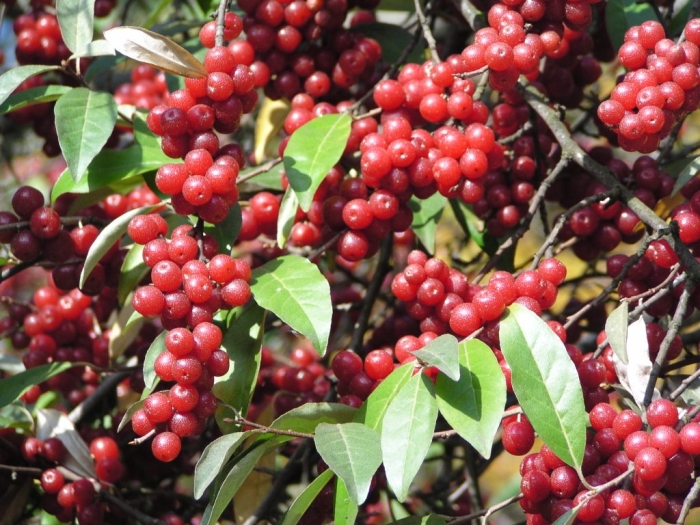Autumn Olive
(Elaeagnus umbellata)
Autumn Olive (Elaeagnus umbellata)
/
/

VoDeTan2Dericks-Tan
CC BY-SA 3.0












































































Estimated Native Range
Summary
Autumn Olive is valued for its fragrant flowers, edible fruits, and ability to thrive in a range of soil conditions. It is often used for wildlife habitat restoration, erosion control, and as an ornamental plant in gardens. However, it requires careful management as it can become invasive outside its native range, outcompeting native species. In cultivation, it adapts well to full sun or part shade, and tolerates various soil types with different drainage capabilities. Gardeners should be aware of its potential to spread aggressively through both root suckers and seed dispersal.CC BY-SA 4.0
Plant Description
- Plant Type: Shrub
- Height: 10-14 feet
- Width: 1.5-2.5 feet
- Growth Rate: Rapid
- Flower Color: N/A
- Flowering Season: Spring
- Leaf Retention: Deciduous
Growth Requirements
- Sun: Full Sun, Part Shade
- Water: Medium
- Drainage: Fast, Medium, Slow
Common Uses
Bank Stabilization, Bee Garden, Bird Garden, Butterfly Garden, Deer Resistant, Drought Tolerant, Edible*Disclaimer: Easyscape's listed plant edibility is for informational use. Always verify the safety and proper identification of any plant before consumption., Erosion Control, Fragrant, Hedges, Rabbit Resistant, Salt Tolerant, Street Planting
Natural Habitat
native to a variety of habitats including open woodlands, forest edges, and riparian zones in East Asia, South Asia, the Himalayas, Korea, and Japan
Other Names
Common Names: Japanese Siverberry , Umbellata Oleaster , Autumnberry , Spreading Oleaster , Autumn Elaeagnus , Autumn-Olive , Doldige Ölweide , Chalef En Ombelles , Oléastre À Ombelles , Schermolijfwilg
Scientific Names: Elaeagnus umbellata , Elaeagnus umbellata var. coreana , Elaeagnus umbellata var. parvifolia , Elaeagnus parvifolia , Elaeagnus praematura , Elaeagnus crispa , Elaeagnus coreanus , Elaeagnus salicifolia , Elaeagnus convexolepidota , Elaeagnus fragrans
GBIF Accepted Name: Elaeagnus umbellata Thunb.